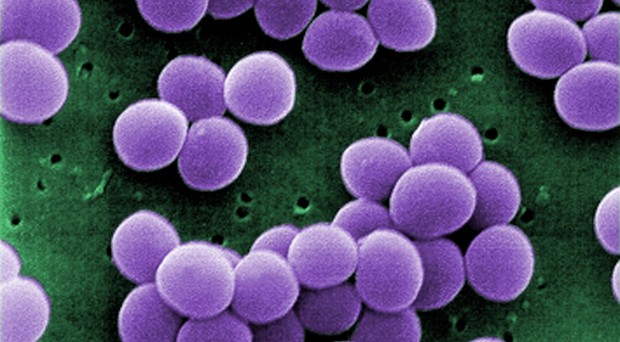
In recent years, population genomic studies of bacterial pathogens involving the sequencing of large numbers of clinical isolates have revolutionized our understanding of the evolution of bacterial clones within hospital, community, and agricultural settings.
In particular, the reconstruction of the evolutionary history of several major pathogenic clones of Staphylococcus aureus has provided broad new insights into their emergence, expansion, and dissemination. However, our understanding of the traits which define a successful clone remains limited.
We know very little regarding the factors influencing competition between bacterial clones within defined niches and the impact of that competition on geographical prevalence. For example, the community-associated methicillin-resistant S. aureus (CA-MRSA) USA300 clone has been the dominant epidemic clone in North America for the last 15 years resulting in very high rates of mortality. However, to date, it has failed to become similarly successful in other regions of the world, contrary to some expectations.
Pandemics of S. aureus often consist of epidemic waves following initial selection for antibiotic resistance, followed by widespread dissemination. For example, in the UK, the EMRSA15 (ST22) and EMRSA-16 (ST36) clones were the dominant hospital-associated MRSA (HA-MRSA) strains in the1990s and 2000s. Although they overlapped in the hospital setting, each had a distinct timeframe for emergence, expansion, and ultimate clonal diminution. A previous study employed different growth and survival assays to identify an apparent increased fitness of the ST22 strain relative to ST36.
The study published in Genome Biology by Hsu and colleagues was the first to use phylogenomic approaches to investigate the dynamics of competing bacterial clones within a defined natural niche.
They examined the origin and dynamics of S. aureus clones within the highly-connected hospital network in Singapore. Using high resolution phylogenetic analyses, the authors established that the previously dominant highly antibiotic-resistant ST239 clone was largely replaced within Singapore hospitals by the more antibiotic-sensitive pandemic ST22A clone (EMRSA-15), probably the result of a single import from the UK.
Although ST239 prevalence has massively declined, specific subtypes of ST239 have been apparently able to withstand ST22 competition, presumably by adaptations which enhance its capacity to compete for colonisation sites.
Strikingly, the accessory genome encoding factors involved in niche adaptation and contingency function has remained highly stable over time with very limited horizontal gene transfer between the clones.
This is consistent with our understanding that clonal lineages of S. aureus contain unique barriers to import of exogenous DNA and can be described as independently evolving sub-species that compete with each other for niche space.
The authors discovered that since the introduction of ST22, ST239 has acquired the ACME genetic element. This encoded an arginine deiminase enzyme on multiple occasions and may have enhanced ST239 ability to colonize and persist in human hosts, as reported for S. aureus USA300.
A better understanding of the factors influencing clonal competition could allow us to make more accurate predictions regarding the likelihood of emergent clones spreading to different geographic locations and their capacity to compete with resident strains.
A number of important questions should be considered: What are the selective forces driving clonal replacement within hospitals? Why do bacterial epidemics often occur in waves of defined time frames? Does acquired immunity to epidemic clones within host populations influence clonal decline and replacement?
Does the sequential acquisition of antibiotic resistance determinants over time by hospital strains of MRSA such as EMRSA-16 and ST239 lead ultimately to a reduction in bacterial fitness over time? Is the production of bactericidal molecules such as bacteriocins or phenol soluble modulins a major driving force for inter-clone competition and ultimate success?
The time-scaled phylogenetic analysis by Holden and colleagues represents an excellent paradigm for future studies of the dynamics of competing pathogenic bacteria.
Functional studies will be required to fully characterize the underlying mechanisms involved. Such information will be critical in the on-going battle to control the emergence and spread of new clones of bacterial pathogens.
Professor Ross Fitzgerald
A major focus is the evolution and pathogenesis of staphylococci from human and animal hosts.
Comments